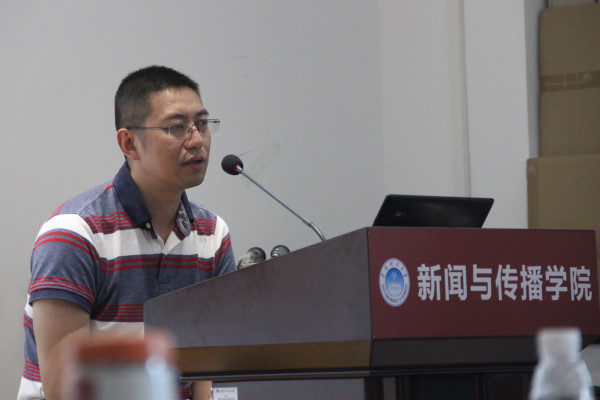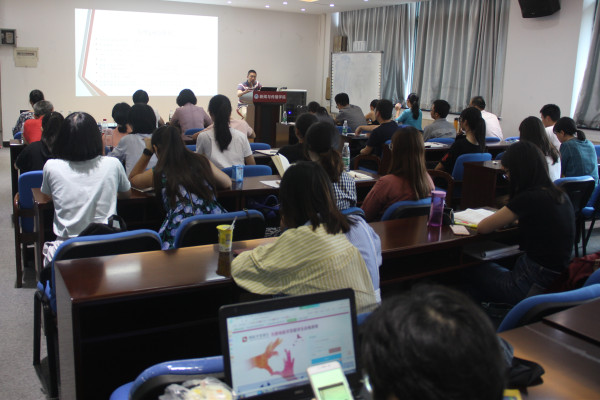On the morning of July 4th, our school invited Professor Liu Hailong, editor-in-chief of International Press magazine and the School of Journalism of Renmin University of China. In the 401 lecture hall, an academic lecture entitled From Propaganda 1.0 to Propaganda 3.0 was conducted for teachers and students.

Professor Liu Hailong started from the history of propaganda, combing the history of propaganda, the history of ideas, and the history of concepts. Proposing propaganda is the process of changing the cognition of others through thoughts or symbols. Taking historical events as a case, he expounded the characteristics of different stages of propaganda 1.0, 2.0 and 3.0 respectively: Propaganda 1.0 proposed an integrated propaganda method, and the concept of total war in the First World War marked the birth of propaganda, irrational The discovery of human beings and the decline of the free market of opinion, the state monopolizes all information channels and content, and creates the entire symbolic universe; propaganda 2.0 carries out scientific propaganda, uses different technical means to achieve precise control, and he changes the propaganda mode before and after SARS Specific explanations have been made, from blocking news to real-time monitoring and reporting, establishing crisis warning, and solving ideological problems in a scientific way; propaganda 3.0 is the integration and transcendence of propaganda 1.0 and 2.0, starting pro-market, scientific, high-tech New propaganda that weakens politics. Professor Liu Hailong took the study of the powerful country app as an example, proposed a new trend of integrated propaganda, and carried out platform-based propaganda and calculation propaganda. Finally, Professor Liu Hailong pointed out that the analysis of propaganda is not a simple linear historical view, from backwardness to progress, from overall propaganda to scientific propaganda, but a complex escalation iteration. The new stage is not a denial of the previous stage. It is the integration of the previous stage.

Lecture site
In the interactive session, Professor Liu Hailong discussed with teachers and students about the quality of propaganda, the difference between internal propaganda and external propaganda, the contribution of China in propaganda concepts, and the technical ethics of propaganda. The propaganda method of the information age is constantly innovating, but its essence remains unchanged. Through the non-mandatory power to control people's thoughts and actions, the combing and discussion of propaganda history has enabled us to have a clearer understanding and reflection on propaganda and communication. (Photo / Yang Yang Zheng Chong;copywriting / Deng Liuye Gao Huijun)
Guest introduction:
Liu Hailong, Ph.D., graduated from the School of Journalism, Renmin University of China. He is currently a professor at the School of Journalism, Renmin University of China, a doctoral tutor, editor-in-chief of the journal International Journal, a researcher at the Center for Journalism and Social Development at Renmin University of China, a part-time researcher at the Center for Information and Communication Studies at Fudan University, and deputy director of the Institute of Journalism and Communication at Renmin University of China. He was a visiting professor at the Taiwan University of Political Science and a visiting scholar at the University of Pennsylvania and the City University of Hong Kong. He is the author of Popular Communication Theory: Paradigm and Genre, Publicity: Concepts, Discourse and Justification, Revisiting the Gray Zone: Writing and Memory of the History of Communication Studies.





